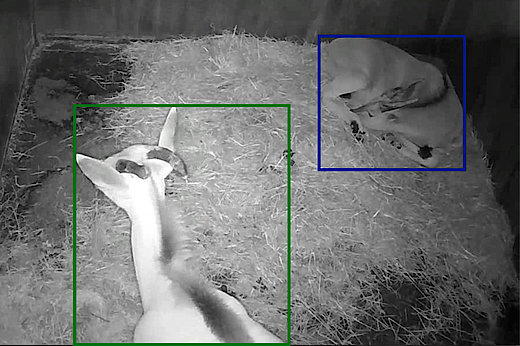
Although it is already known that the nocturnal activity budget is a good indicator of animal welfare, the nightly behavior has been little studied. But behavioral patterns between day and night in large herbivores differ greatly and therefore it is of great importance to focus more on the nocturnal behavior.
To address this issue, we have developed a software package called BOVIDS (Behavioral Observations by Videos and Images using a Deep-Learning Software), which uses images to predict animal behavior. This system uses deep learning as approach and consists of three steps. The first step, called Object Detection, recognizes whether an animal is in the image and can thus determine the category Out. In addition, the individuals are distinguished, and the position of the animal is determined. This is followed by the so-called action classification step, in which the behavior of the animal is predicted. Here, the three behaviors of Standing, Lying and Sleeping are distinguished by BOVIDS. Finally, errors caused by the prediction are corrected by the so-called post-processing.
Through this automation, large amounts of data can be examined with much less human work, so that many nights of single individuals as well as many individuals of a species or even many different species can be examined.